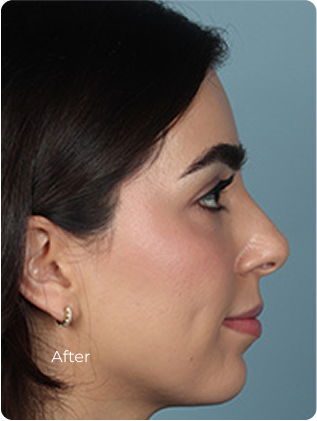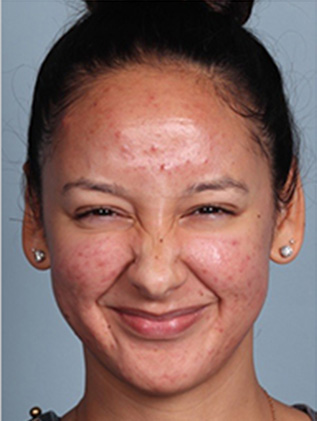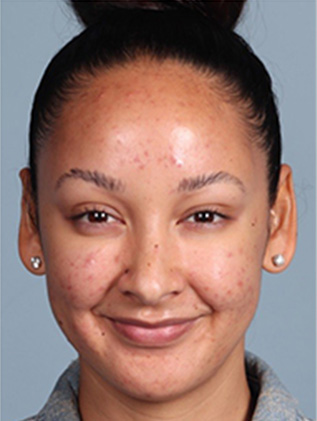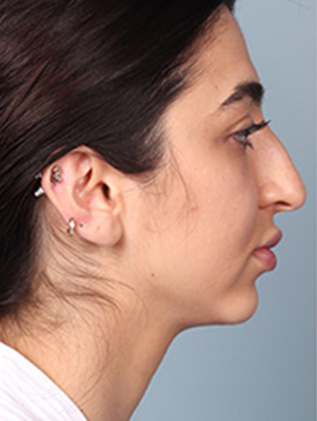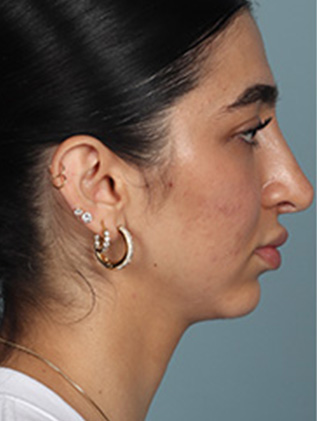By Dr. Luis Macias
While we often recognize the eyes as the primary feature for conveying emotions, we may overlook the lips. In fact, the lips are a close second. A warm smile can draw people in, and a passionate kiss can express love. The lips play a vital role in how we connect with others. Full, youthful lips have long been symbols of vitality and beauty. With advancements in cosmetic procedures, it’s now possible to maintain that youthful appearance over time. In this article, we’ll explore the intricacies of the lip grafting procedure. We’ll discuss how it works, its benefits, and whether it’s the right option for you.
What is Lip Grafting? Advantages and disadvantages
As we age, our faces naturally lose the volume and youthful plumpness that define a more vibrant appearance. This volume loss happens due to a reduction in bone density and soft tissue. As a result, the skin becomes thinner with less fat and connective tissue. To combat these signs of aging, experts have developed various cosmetic procedures. Fat grafting and lip fillers are two popular options.
There are several methods for permanent lip augmentation. Fat grafting, also known as fat transfer, is a minimally invasive surgical procedure. It involves harvesting fat from areas like the abdomen or inner thighs through liposuction. After processing and purifying the fat, the surgeon meticulously injects it into the lips. Other targeted areas can include the face, buttocks, breasts, under-eye areas, hips, or cheeks. Another permanent solution is SMAS lip grafting. In this procedure, the surgeon takes tissue from the SMAS layer in the face during a facelift.
Additionally, surgeons can harvest a dermal lip graft from the abdomen. SMAS and dermal grafts generally offer the most predictable results, as not all injected fat in fat grafting may survive, leading to some variability in the outcome. Fat grafting is particularly appealing because it utilizes the patient’s fat, providing a natural and permanent solution that not only restores volume but may also enhance skin quality due to the reparative cells present in the transplanted fat.
On the other hand, manufacturers produce lip fillers from substances like hyaluronic acid, and these fillers are injected into the lips to add volume and shape. Fillers provide immediate results with minimal invasiveness, making them a popular choice for those seeking quick enhancements.
However, it’s important to note that the results from fillers are temporary, typically lasting between six months to a year. To maintain the desired look, you need ongoing maintenance treatments.
Comparing Fat Grafting and Fillers
When deciding between lip fat grafting and lip fillers, you should consider several key differences.
Permanence vs. Temporary Results
Lip grafting offers a more permanent solution, with results that last for years, if not indefinitely. Lip fillers, while effective, require regular touch-ups to maintain an enhanced appearance. In the long run, fillers can be more costly. When unsure of which procedure to choose or if you’re looking for minor adjustments, it’s best to start with fillers, as they are quick and reversible. However, if you want long-lasting results, lip grafting is a better option.
Natural vs. Commercial Substances
Fat, SMAS, or derma grafting uses your own body’s fat, which minimizes the risk of allergic reactions or rejection and often results in a more natural look and feel. Since fat grafting involves injecting fat from one part of your body into another, it does not use synthetic substances. In contrast, lip fillers use synthetic substances, although they are designed to be safe and biocompatible. Since fat is natural it also feels natural. Fillers on the other hand can feel firmer than regular tissue. When you kiss somebody, they may feel the stiff substance.
Procedure and Downtime
Surgeons can perform fat grafting, a type of lip grafting, under local anesthesia. However, SMAS or dermal lip grafting typically requires general anesthesia, as these procedures are often part of more extensive surgeries like facelifts or tummy tucks. Lip grafting is a more involved procedure that requires minor surgery and some recovery time. Despite this, it offers the added benefit of improving skin texture due to the presence of stem cells in the fat. In contrast, lip fillers are less invasive, with minimal downtime, making them a convenient option for those with busy schedules. Each method provides a different approach to lip augmentation, allowing patients to choose based on their needs and lifestyle.
Flexibility and Precision
Lip fillers offer a highly controlled and precise method for shaping the lips, with the flexibility to adjust results over time to achieve the desired look. This makes them ideal for individuals seeking customizable outcomes. Fat grafting, while a natural option, doesn’t provide the same level of precision and may take longer for the final results to settle fully. Additionally, fat grafting can be somewhat unpredictable, as the amount of fat that remains after the procedure can vary depending on the individual and the surgeon’s technique.
In contrast, SMAS and dermal grafts deliver the most precise and stable results, as these grafts do not gradually diminish or migrate. However, they do require a surgical procedure under general anesthesia, often performed in conjunction with other surgeries like facelifts or tummy tucks. This makes SMAS and dermal grafting ideal for those seeking long-term precision in their lip augmentation.
Who is a candidate?
Lip grafting is particularly suited for individuals who meet the following criteria:
Preference for Natural Results: The most suitable candidates are those who want a natural-looking enhancement. Lip grafting uses the patient’s fat, so the results blend seamlessly with the existing lip tissue, creating a subtle and more natural fullness compared to synthetic fillers. This procedure is perfect for those who want to restore or add volume without an overly plumped appearance.
Weight Fluctuations: For the best and most stable results, candidates should be at a stable weight and should not plan to undergo significant weight changes, such as extreme dieting or weight loss surgery, after the procedure. Stable weight helps ensure that the grafted fat integrates well with the surrounding tissues and maintains its volume over time. People who have a history of significant weight fluctuations might see variable results from lip grafting. For example, if someone is prone to gaining and losing large amounts of weight frequently, the fat in the lips may not remain consistent, leading to uneven or unpredictable outcomes.
Concern About Synthetic Materials: For individuals who are wary of synthetic fillers that tend to migrate, lip grafting is the more natural option. The use of their fat reduces the risk of allergic reactions and complications, offering a safer alternative for those with sensitivities to synthetic substances.
Adequate Donor Fat: The procedure requires a sufficient amount of fat to be harvested from other areas of the body, such as the abdomen, thighs, or flanks. Individuals with enough donor fat are better candidates, as they can provide the necessary material for a successful transfer.
Overall Health: It is important to be in good general health for a successful procedure and recovery. Candidates should not have chronic conditions such as diabetes, autoimmune diseases, or clotting disorders that could complicate healing. Surgeons prefer non-smokers because smoking can impair blood circulation, reduce fat survival, and cause poor healing.
Realistic Expectations: Ideal candidates should have a realistic understanding of what lip grafting can achieve. The procedure enhances the natural shape and volume of the lips, but it does not produce dramatic changes. Those who anticipate subtle, long-lasting improvement are more likely to be satisfied with the outcome.
Age: Lip grafting is a versatile cosmetic procedure appropriate for a wide range of ages, depending on individual factors. Young adults wanting fuller lips or subtle volume enhancement may benefit from lip grafting, especially if they have naturally thin lips or have noticed some volume loss. Middle-aged adults often start to experience volume loss in the lips due to aging, and lip grafting can effectively address these changes. Older adults looking to restore lip volume and improve lip contour as part of overall facial rejuvenation may find lip grafting a suitable option. Many older adults combine lip grafting with other cosmetic treatments to address multiple signs of aging simultaneously.
The Lip Grafting Process
Lip grafting is a meticulous procedure that requires careful planning and execution to achieve natural, long-lasting results. Understanding each step of the process can help you feel more prepared and confident about your decision to enhance your lips.
Initial Consultation
The first step in the lip grafting process is the initial consultation with a qualified cosmetic surgeon. During this appointment, your surgeon will assess your facial structure, discuss your aesthetic goals, and determine if you are a suitable candidate for the procedure. This is also the time to ask any questions you may have about the procedure, recovery, and expected outcomes.
The procedure
Local anesthesia is the most common choice for lip grafting procedures. With local anesthesia, the surgeon numbs only the treated area, keeping you awake and alert throughout the procedure. During the procedure, the surgeon injects a local anesthetic into the lips and the donor site where they harvest the fat. You may feel some pressure or minor sensations, but you should not experience any pain.
While less common, surgeons may use general anesthesia for lip grafting in specific cases. If they perform lip grafting alongside more extensive procedures, such as a facelift or facial grafting, they might use general anesthesia to ensure the patient remains completely unconscious and comfortable throughout the extended duration of the combined surgeries.
Liposuction, fat processing, and injection
Fat grafting, a key technique in lip augmentation, utilizes the patient’s fat to enhance lip volume and shape. This method not only offers a natural appearance but also leverages the body’s tissue for a more harmonious result. Here’s a closer look at the process, including advanced techniques and steps involved:
Harvesting Techniques: The initial step involves harvesting fat from donor areas of the body, such as the abdomen, thighs, or flanks. Advanced techniques, such as microsomal fat and nano fat processing, are used to ensure a more natural and refined result. Microsomal fat processing uses finer particles of fat for smoother integration, while nano fat provides even smaller particles that enhance skin texture and quality, creating a more natural look and feel.
Purification Process: Once harvested, the fat undergoes a meticulous purification process. This crucial step involves centrifugation or filtration to separate the fat from impurities such as blood, oil, and dead cells. The result is a concentrated, high-quality fat that is ideal for injection. Purification selects only the healthiest and most viable fat cells, maximizing the chances of successful integration and longevity. Surgeons process the fat through small sieves that turn it into a puree and then inject it using a 27-gauge needle, the same type used for injecting fillers.>.
Injection Technique: The purified fat is then injected into the lips using small, specialized cannulas. This technique allows for precise placement of the fat in small droplets, which helps prevent the formation of oily cysts or irregularities in contour. The use of fine cannulas minimizes trauma and contributes to smoother, more natural results.
Contouring and Shaping: After the fat has been injected, the surgeon meticulously shapes and contours the lips. This involves gently massaging the lips and making any necessary adjustments to ensure symmetry and natural appearance. The goal is to achieve a balanced, full look that enhances the natural beauty of the lips while avoiding an overdone appearance.
The Recovery Process and Tips
After your lip grafting procedure, you can expect some swelling, bruising, and discomfort. These are normal and part of the body’s natural healing process. Both your lips and the donor area where the fat is taken from may become swollen and bruised, with the intensity varying depending on the individual and the extent of the procedure. It’s common to experience mild to moderate discomfort, which you can usually manage with prescribed or over-the-counter pain medications. You may also feel some tenderness in your lips.
The healing process after lip grafting typically takes several weeks, with the most significant changes occurring during the first two months. The final results become more apparent as the lips settle into their new shape. Most patients find that the body reabsorbs 80-90% of the transplanted fat, and whatever remains is likely to be permanent. The final result may not be fully visible until around three to six months after the procedure, as further subtle changes continue to take place.
Here are some things to avoid to ensure fast healing and better results:
- avoid smoking, or drinking alcohol
- avoid strenuous activities
- Keep the donor and lip areas clean to prevent infection
- Avoid irritative and harsh products
- Protect your lips from direct sun exposure
Frequently Asked Questions
What is the biggest drawback of the lip grafting procedure?
The biggest drawback of lip grafting is the variability in the success rate of fat retention. During the lip grafting procedure, fat is harvested from one area of the patient’s body and then injected into the lips. For the grafted fat to be successful, it must revascularize, meaning it needs to develop its blood supply to survive.
Unfortunately, the survival rate of the fat cells can vary significantly. Research indicates that the body may reabsorb anywhere from 40% to 90% of the grafted fat. This variability largely depends on factors such as the surgeon’s skill, the injection technique used, and the specific areas where the fat is placed.
Additionally, the procedure carries other potential risks, including asymmetry, uneven results, or the formation of lumps. The need for precise placement and careful technique to ensure optimal fat survival can make lip grafting challenging. Patients may need touch-up procedures to achieve the desired results, adding to the overall cost and recovery time.
Can I combine fat grafting with other procedures?
Absolutely! Combined with cosmetic procedures like facelifts, the overall facial grafting can be the cherry on top. As we age, not only do we experience a loss of bone volume, but also a reduction in soft tissue, including fat and connective tissue. This simultaneous loss can lead to sagging and a less youthful appearance.
Commonly, procedures like facelifts and neck lifts are used to address sagging tissues and restore some of the tightness and tautness of the skin. However, these techniques primarily focus on lifting and tightening rather than replenishing lost volume. This is where fat grafting, or fat transfer, becomes particularly beneficial.
By combining fat grafting with facelift or neck lift procedures, you can address both volume loss and skin laxity.
What is the difference between fat grafting and fat transfer?
Fat grafting and fat transfer are terms that are often used interchangeably. Both procedures involve taking fat from one area of the body and injecting it into another area. However, when it comes to lip augmentation, fat grafting specifically refers to the use of harvested fat to enhance the lips, whereas fat transfer is a broader term that can involve transferring fat to various parts of the body, such as the face, buttocks, or breasts.
Can lip grafting be performed on individuals with previous lip fillers or implants?
Yes, lip grafting can be performed on individuals who have previously had lip fillers or implants. However, it’s important to inform your surgeon about any prior procedures so they can assess the best approach. In some cases, the presence of fillers or implants may affect the technique or outcome of the grafting procedure.
How does lip grafting affect lip sensitivity?
After the grafting procedure, most patients will experience normal sensations in their lips. However, there may be temporary numbness or altered sensitivity in the treated area as it heals. These symptoms usually resolve within a few weeks. If you experience prolonged or unusual changes in sensitivity, it is important to consult with your surgeon.
Can lip grafting be reversed if I’m not satisfied with the results?
Unlike temporary procedures such as lip fillers, lip grafting is more challenging to reverse. If you are not satisfied with the results, your options for adjustment may be limited. However, you can discuss with your surgeon potential solutions, such as additional procedures or touch-ups, to achieve the desired outcome.
Can lip grafting improve lip texture?
Yes, lip grafting can improve lip texture to some extent. The presence of fat in the lips can lead to a smoother and more supple texture, as the fat contains stem cells and reparative properties that benefit skin quality. However, the primary focus of the procedure is to enhance volume and shape.
Final thoughts
When choosing between lip grafting and lip fillers, it’s crucial to evaluate your personal preferences, lifestyle, and aesthetic goals. Consider factors such as the desired longevity of the results, willingness to undergo a minor surgical procedure, and the importance of using natural versus synthetic materials. Consulting with a qualified and experienced cosmetic surgeon is essential in this decision-making process. A professional can provide a detailed assessment based on your unique needs, discuss potential risks and benefits, and help you select the most appropriate option to achieve your desired outcome.
Both procedures can offer beautiful and satisfying results, but understanding the differences and aligning them with your personal goals will ensure you make an informed choice that best suits your needs. Whether opting for the enduring, natural approach of lip grafting or the immediate flexibility of lip fillers, your decision should reflect both your aesthetic desires and practical considerations.



